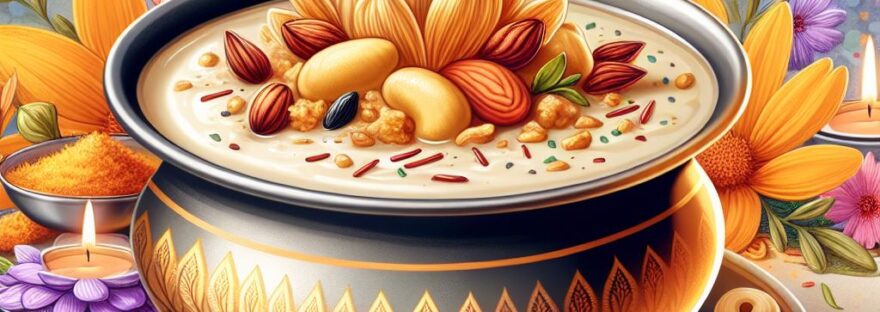Lord Ganesha is offered several forms of laddu/laadu during Ganesh Utsav as he is fond of laddus. It seems like we have borrowed his sweet tooth for these ten days! 😊
After Modak, there’s a long list of laddus starting with motichoor laddu, boondi laddu, besan laddu, and rava laddu, which are commonly prepared and must-have prasadam/offering on one of the ten days.
However, it occurred to me that Ragi (finger millet) can be used to make delicious laddus and should not be missed as this is another preferred food of the elephant lord! In fact, I call Ragi laddus “Indian choco laddu” though they are devoid of cocoa. 😊
There are several variants in making these laddus. Below is my version of Ragi Laddus.
Ingredients:
- Ragi flour (Finger Millet) – 200 gm (slightly roasted in microwave for 1 min)
- Wheat flour – 100 gm (roast with a teaspoon of ghee (clarified butter) to a slightly brown color)
- Jaggery – 100 gm (grated)
- Dry coconut – 50 gm (grated)
- Milk – 100 ml (lukewarm)
- Ghee (clarified butter) – 20 gm
- Cashew nuts – 10-15 (plain roasted)
- Cardamom powder – 1 tsp
Method:
- Mix all the ingredients in the sequence listed above to make a soft dough.
- Form the dough into round laddus. The malty flavor and chocolaty color attract kids at first sight, so do make a point to name it Choco Laddu. What’s more, you are giving your child the best choco ever, 100% nutritious! 😊
- Laddus can be preserved in the fridge for up to one week. If you find the laddus too dry, just break them and bind them again by adding a little warm milk.
- You can also make a soft porridge of this laddu by adding hot milk, an ideal meal for infants and toddlers.
Some Knowledge on Ragi and its Qualities: Ragi (finger millet) is popular in the southwestern states of India. It is widely consumed as a staple food apart from rice in Karnataka and some parts of Andhra Pradesh, Tamil Nadu, and Maharashtra. Ragi is a very soft millet when made into flour and is a rich source of calcium, other minerals, and fiber. It is easily digested, soothes the digestive system, and is a natural coolant. Ragi soaked overnight in buttermilk or water is consumed as the first meal in hot summers, as it is loaded with rich minerals and fiber, absorbed gradually due to its fiber content, helping maintain fluid balance in the body and preventing energy loss/exhaustion. It is one of the cheapest and best infant foods popular in southern states of India and is making its mark in several branded cookies for its fiber and calcium-rich qualities, making it ideal for diabetics, cardiac patients, and weight managers. Regardless of the region, Ragi is a great food for infants because of its soft malty taste when cooked in milk with a bit of jaggery or sugar and a pinch of cumin powder. This is certainly an important food for moms-to-be and nursing mothers.
Nutritional Benefits:
- Ragi: Rich in calcium, fiber, energy, and protein.
- Wheat: Good amount of protein, energy, and fiber.
- Jaggery: Unrefined sugar, iron, minerals, and fiber; great taste enhancer as a sweetener; complex form of sugar.
- Coconut: Rich source of protein, vitamin E, minerals, and fiber.
- Ghee: A better option of fat compared to saturated fats and trans fatty acids.
- Cashew nuts: Rich in protein, essential fatty acids, fiber, and antioxidants.
- Cardamom: Adds flavor, antioxidants, and essential oils.
Shall we call it a complete nutritious food? YES, of course! My take is that it’s the best food for all seasons and festivities and a great snack for kids with the goodness of all nutrients from various sources. You can make variations by replacing wheat flour with any other flour of cereals or pulses as per your taste and liking. You can also add cocoa powder to make it a real choco flavor for normal days. However, it is a practice in India to use all-natural sources of foods to prepare the Prasad or Naivedhyam (offering), so it’s all-natural in the current recipe. 😊
So, let’s get started with a hands-on experience!
Note: Always remember, anything in excess is dangerous!
Ganapathi Bappa Moriyaa! Mangala Moorthi Moriyaa!


